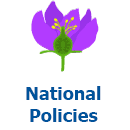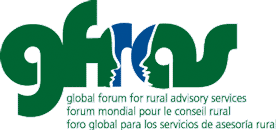 Every country has developed, formulated, and decreed national policies related to rural advisory services. Find some examples here. If you are looking for a national policy from a specific country, please use the search function, selecting the category “National policies” and the tag for the country.
Every country has developed, formulated, and decreed national policies related to rural advisory services. Find some examples here. If you are looking for a national policy from a specific country, please use the search function, selecting the category “National policies” and the tag for the country.
Analyzing the Gender Sensitivity of Rural Advisory Services in Bangladesh
Gender relations in Bangladesh have been undergoing a process of considerable transformation over the past thirty years as part of a broader process of economic transition and societal change. Women farmers made up 40 percent of the total agricultural labor force in 2010, with a 7 percent growth in women’s participation in agriculture between 2005 and 2010 (Akter et.al., 2015). Evidence shows that the wage difference between men and women in agriculture decreased from 40% to 30% for the year 2011/12 to 2013/14, which can be taken as a positive change (FPMU, 2015; BBS Monthly Bulletin, 2015), although the gap is still very high. Despite such progress, Bangladeshi women are still primarily considered to be unpaid family labor (56.3% of women in the labor force), and their contributions to agriculture are not fully recognized, neither in the household and communities nor at the national level (SFYP, 2015).
Analysis of Indicators and Measurement Tools Used in Zambia to Assess Impact of Agricultural Extension Programs on Gender Equity and Nutrition Outcomes
In Zambia, investment in agricultural extension with a focus on gender equity and nutrition outcomes has been increasing, and in the last decade, several organizations have replicated projects in different geographical areas. However, with persistent high prevalence of malnutrition and micronutrient deficiencies still being recorded especially among children below the age of five, it is either these initiatives have little impact on reducing malnutrition, they are not sufficient, the correct programs are not being implemented, and/or the methods used to measure the impact may be inappropriate.
Reducing the Gender Gap in Agricultural Extension and Advisory Services: How to Find the Best Fit for Men and Women Farmers
Agriculture is a fundamental driver of economic growth and poverty reduction for many developing countries. Past efforts at revitalizing the agriculture sector have failed in part because they overlooked the role of women and the negative effects of gender inequalities on productivity. According to The State of Food and Agriculture (FAO, 2011), “Women comprise, on average, 43% of the agricultural labor force in developing countries, ranging from 20% in Latin America to 50% in Eastern Asia and Sub-Saharan Africa”. Reducing gender inequalities in access to productive resources and services could increase yields on women’s farms by 20–30%, which could raise agricultural output in developing countries by 2.5–4% (FAO, 2011).
Competency Framework for Integrating Gender and Nutrition within Agricultural Extension Services
The INGENAES capacity development activities are intended to build gender-responsive, nutrition-sensitive skills among organizations providing agricultural extension services (AES). The objectives are to enable these organizations to identify and equip staff with the appropriate skills to deliver services that lead to improved gender- and nutrition-related outcomes; and to establish a set of gender-responsive, nutrition-sensitive AES practices that substantially and effectively strengthen gender equity and improve nutrition outcomes.
What types of skills, attitudes, and behaviors (SAB)1 are necessary to enable institutions to deliver gender- and nutrition-informed services?
The SABs needed at the individual level require a supportive environment that enables individual extension workers to employ the SABs. Such a supportive environment consists of technically correct training, supportive supervision, and appropriate incentives to encourage SAB deployment by staff.
Women’s Empowerment and Child Nutrition: Reducing the Gap with Dairy Cow Rearing
In Bangladesh, rural households rear cattle as a component of mixed farming rather than on a truly commercial basis. Like most Asian countries, rural Bangladeshi women extensively participate in livestock management, especially in rearing dairy cows (FAO, 2003; Anderson and Eswaran, 2007; Hashemi et al., 1996; Kabeer 1998) yet society rarely recognizes them as farmers. Consequently, women still receive limited extension services or other support and therefore their contributions to dairy value chains are less than they could be.
Women in Post-harvest Activities: Understanding their Health and Nutrition Behaviour
Bangladesh is a country with mainly paddy-based agriculture, which has managed to triple its rice production since independence in 1971, from 10 million metric tons to over 33.83 million metric tons (Krishi Dairy in Khatun, 2015). 76% of the country’s people live in the rural areas and 90% of them have livelihoods directly related to agriculture (Dev et al., 2014). From this perspective, rural women’s participation in post-harvest activities are one of the most important contributions in agricultural production in Bangladesh. However, in traditional Bangladeshi context, post-harvest work is simply seen as part of women’s household responsibilities; in other words, this work has little monetary value or social recognition. Though this scenario has been changing due to the new technological intervention and frequent market affiliation with rice production and processing, nowadays many women are working in mills (usually called rice mills) as cheap and conventional labour for their livelihood. In this aspect, the aim of this study is to explore the health and nutritional behaviour of rice mill women workers in Narina Union of Shahjadpur.
Engendering Agricultural Extension Services and Agricultural Marketing:
Promoting Female Headed Households Farmers’ Economic Empowerment for Securing Nutrition
The objective of this research is to incorporate women in extension services to enhance their economic empowerment to secure nutrition in their households. This study was carried out in Manikganj district with the help of Karmojibi Nari. The information was collected from women farmers of FHH, Government extension service officer, Building Resources Across Communities (BRAC) and Karmojibi Nari staff members, the chairman and another member of Manikganj Chamber of Commerce, and a group of community men. We used the in-depth interview method and Focus Group Discussion method as qualitative tools to collect data from the different target groups.
Integrating Gender and Nutrition into the Granos Básicos (Basic Grains) Value Chains
INGENAES Info Sheet
In many Latin American countries, diets are based around “basic grains” – corn and beans. Many rural poor families depend on basic grains for their survival, and they are considered the most important crops to the social and economic life of Hondurans. Corn and beans represent twelve percent of the agricultural GDP and generate about 300,000 permanent jobs in Honduras (www.hondurasnews.com/basic-grains-crops-good). However, with climate change and poor farming practices, many families do not grow enough of these crops for their household needs and other nutritional needs are not met due to an overemphasis on these two food sources.
Download
Integración del Género y la Nutrición en las Cadenas de Valor (Granos Básicos)
INGENAES Material Informativo
En muchos países de América Latina, las dietas se basan en "granos básicos" - maíz y frijoles. Muchas familias de los sectores rurales dependen de los granos básicos para solventar sus necesidades alimentarias. En Honduras los granos básicos desempeñan un importante rol en el aspecto social y económico. El maíz y los frijoles representan el 12% del PIB agrícola y generan cerca de 300.000 empleos permanentes en Honduras. Sin embargo, debido a factores como el cambio climático y en algunos casos inadecuadas prácticas agrícolas, la productividad de estos cultivos es baja y no suple las necesidades alimentarias y nutricionales del hogar.
Download
Assessing Food Patterns and Gender Roles
INGENAES Tip Sheet
Nutrition is important in everyone’s lives, but what good nutrition specifically means may mean different things to different members of a community or family. Women may be the ones who prepare food, but they often have less influence on household decisions including what foods they prepare. It is important to include men in discussions as they may be making production, marketing or purchasing decisions. When men understand the contribution they can make, they can take action to improve family nutrition.
Download

